
Für eine deutsche Übersetzung dieser Seite einfach die Brandenburger Flagge anklicken
 |
Click the Brandenburg Flag for a German translation Für eine deutsche Übersetzung dieser Seite einfach die Brandenburger Flagge anklicken |


|
Berlin State |
Vacation 2010September 24, Germany
Alexander Square, Berlin |
East Berlin |


 Panoramic picture borrowed from Panoramio fotographer M. Reinhardt.
Panoramic picture borrowed from Panoramio fotographer M. Reinhardt.
|

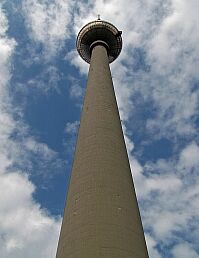 |
Within 200 years, Alexander Square evolved from a cattle market outside
the city limits to one of Berlin's most busy places. The Square was named in honor of Russian Tsar
Alexander I on the occasion of his visit to Berlin in 1805. After World II and the consequential division of Germany and Berlin, Alexander Square became the center of East Berlin, then the capital of East Germany. As such its development was pushed forward rapidly, culminating in the erection of Germany's tallest building, the Berlin TV Tower in 1969 (picture left). As the political center of East Germany, the square has witnessed a number of rather unusual events, like the 1973 World Youth Festival, also called the "Woodstock of the East, and the largest protest demonstration in East German History in 1989. Today, it is one of Berlin's largest public squares and one of its main transport hubs. |

 Cattle Market in 1796
Cattle Market in 1796 |
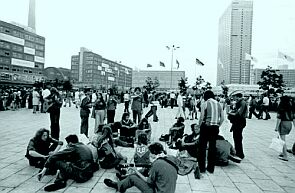 The Woodstock of the East, August 1973
The Woodstock of the East, August 1973 |
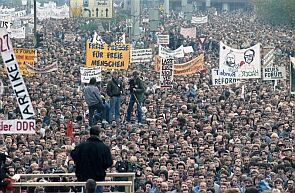 The end of Communism, November 1989
The end of Communism, November 1989 |

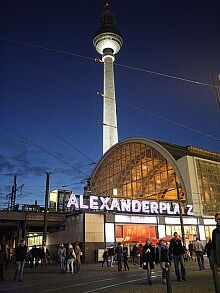 |
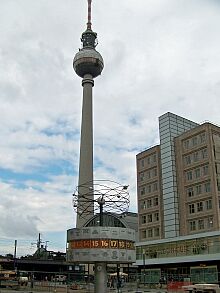 |
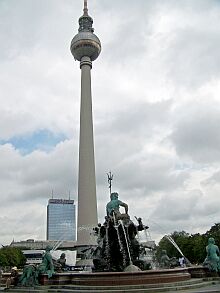 |
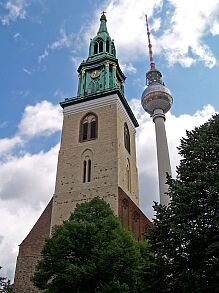
|

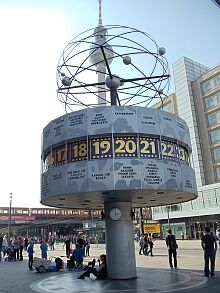 |
 |
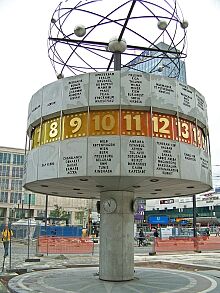 |
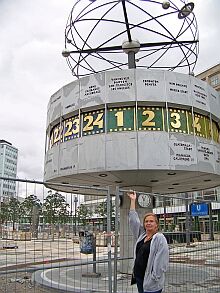
|
|
First, there is the World Clock, showing all 24 time zones. When we
first visited the square in 2007, the place was under construction, but we could still tell that it was just 1 AM in San Francisco. Then, there are the Convention Center and the House of Teachers, both built in 1964. Back then, the 12-story building was East-Berlin's first skyscraper. All around the building winds a giant mural in typical socialist style. Locals call it disrespectfully the "Cigar Belt." |
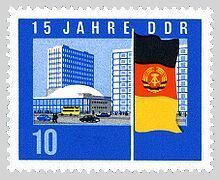
|
 |
 |
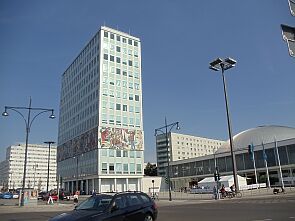
|
 |


| But there are not only modern buildings at Alexander Square. Right next to the TV tower is St. Mary's - Berlin's oldest church. Its precise age has been lost in time but it was first mentioned in German chronicles in 1292, 200 years before Columbus landed in America. |
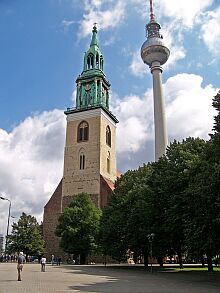 |
 |
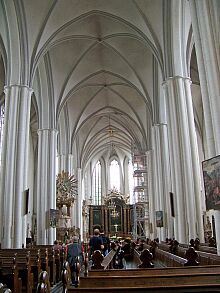
|
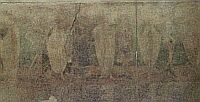 |
The church contains one of Germany's oldest paintings, a
Dance of Death Fresco. This medieval allegory on the universality of death
dates back to the plague-year 1484. Currently, it is in pretty bad shape (left). A computer generated graphic (right) brings it back to life. |
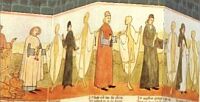
|
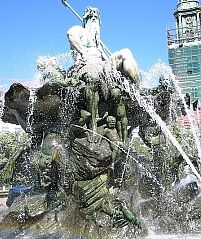
 |
In front of the church is Berlin’s most famous and certainly most beautiful fountain - the
Neptune Fountain. It was created by architect
Reinhold Begas in 1888. Originally, it was located at Palace Square in front
of Berlin’s City Palace. The palace and the fountain were heavily damaged in World War II and when the palace was demolished by the East German government in 1951, the remaining pieces of the fountain were dismantled and put into storage.  When Alexander Square got its makeover in 1969, the fountain was restore and is now placed at the cross-point of the lines of sight to the TV Tower the City Hall and St. Mary’s Church.  Lord Neptune now thrones again on a giant shell, surrounded by marine animals and adorned by four mermaids representing Prussia’s four main rivers. |
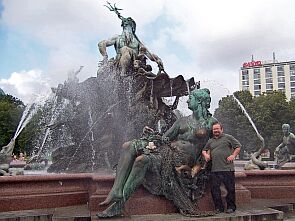 Volker with "River Rhine"
Volker with "River Rhine" |
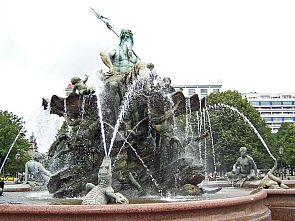 |
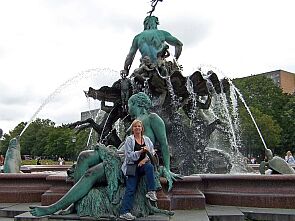 Judy with "River Oder"
Judy with "River Oder" |


|
|
Adjacent to Alexander Square are Berlins Red City Hall, built in 1869 by
H. F. Waesemann and a
monument of
Germany's three greatest philosophers: Marx, Engels and Volker.
|
Berlin-Center |
|

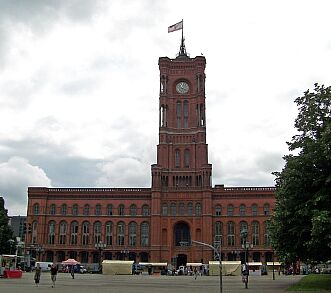 |
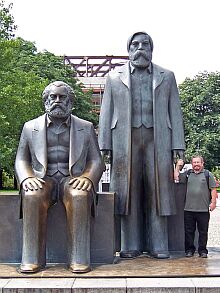 |
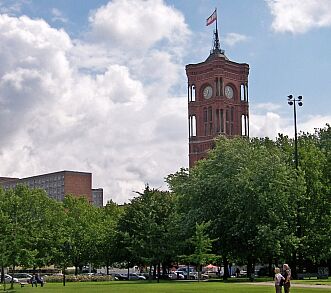
|
 |
Of course, after the fall communism, there was a lot of discussion about the fate of a monument celebrating its founding fathers, Marx and Engels. Many people demanded its demolition, but evenly many demanded to keep just that one monument as a reminder of our past. The solomonian solution: The monument once faced East (Moscow). Now, it got turned around, facing West. |
| Other symbols did not survive. Amongst them the former East-German House of Parliament, called the Palace of the Republic. Below is an old picture taken right after its opening in 1977 (complete with TV-Tower and "Trabant") and a picture we took 30 years later in 2007, right before the demolition was completed. |
 
|
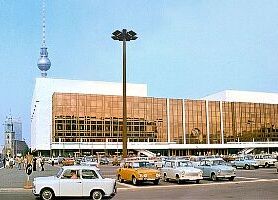 |
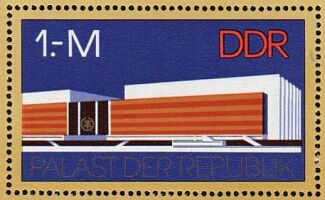 |
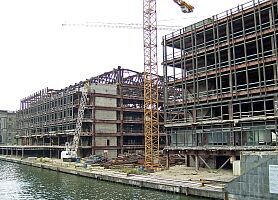
|


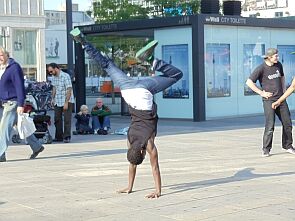 |
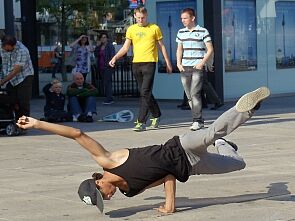 |
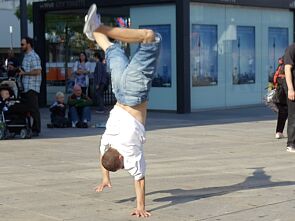
|
 Before we went back to Potsdam, we watched a group of impressive breakdancers performing in front one of Berlin's largest train stations. 
|
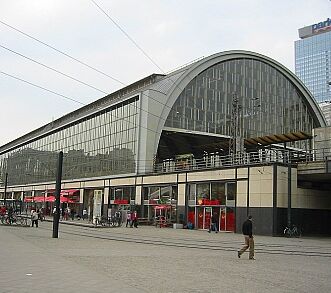 |
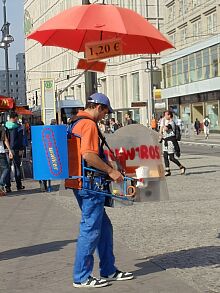 |
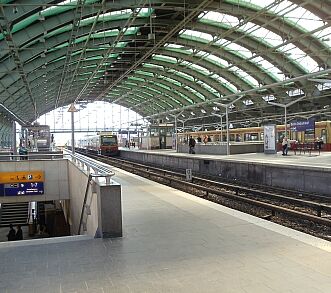
|


 |
Click the left turn sign to get back to the previous page. Or click the right turn signal to get back to Potsdam. |

|


 Back to Vacation 2010 |
 Back to English Main Page |
 Back to Start Page |